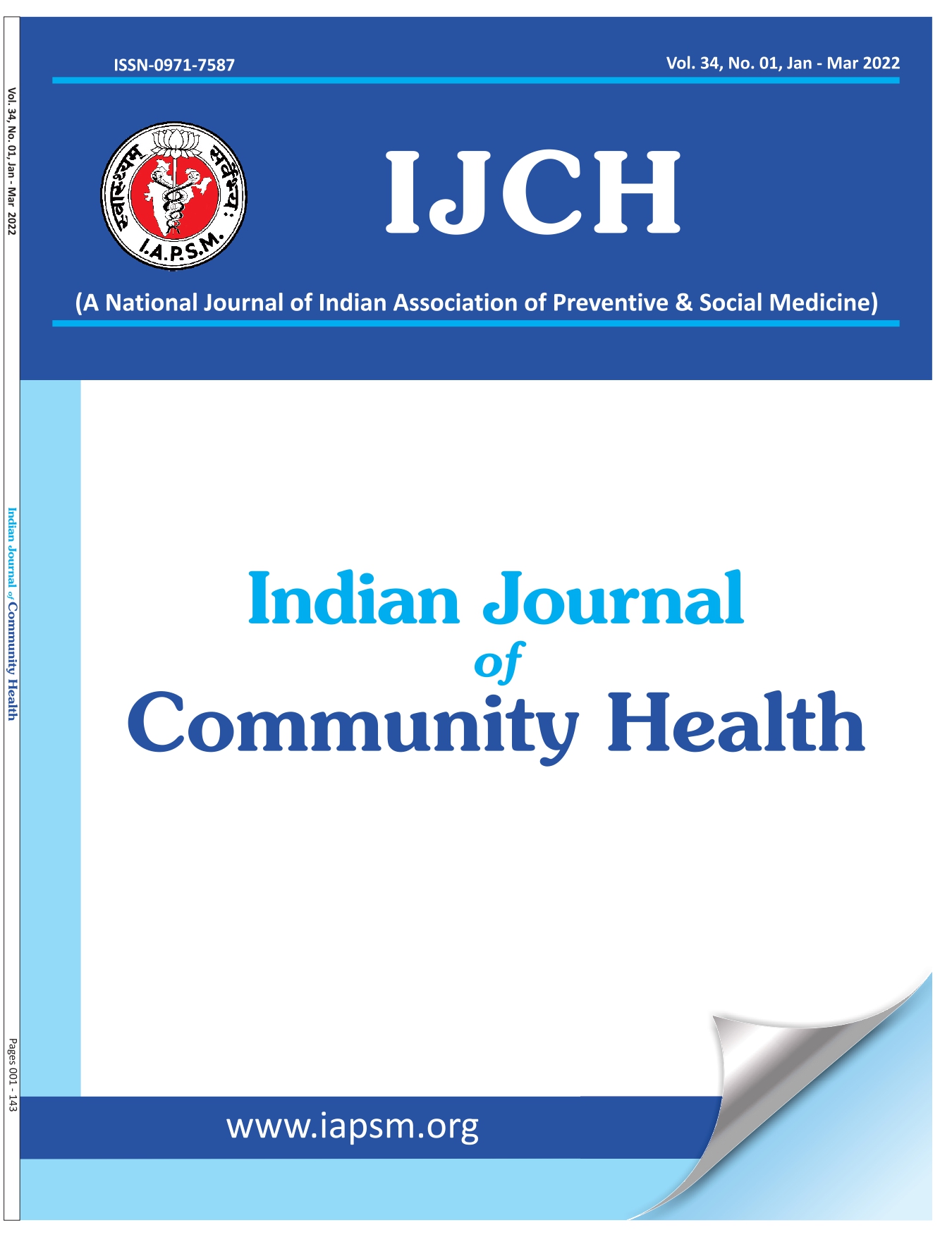Universal Health coverage – a reality or mirage
DOI:
https://doi.org/10.47203/IJCH.2018.v30i02.001Abstract
Providing quality health services to everyone and everywhere is the dream of many countries and India is one of them. Universal health coverage means that everyone is able to access essential quality health services without facing financial hardship (1). On the other hand it does not mean that every health service will be provided free of cost to everyone everywhere. With the advancement in medical science the cost of treatment is increasing day by day and it is pushing people specially the marginalized one into poverty. It is has been said that poverty breeds diseases and diseases breeds poverty. If one has to provide minimum plethora of essential quality health services to all in India then one has to make efforts to decrease out of pocket expenditure on health. As per WHO tracking universal health coverage global monitoring report 2017 (2), 17. 3 % Indians spend more than 10% of their annual income for treatment and 3.9 % spend more than 25% of their annual income on treatment. In fact when we look at the data provided by National Sample Survey round 71 (3) it is apparent that expenditure on free medicines for In patients has reduced from 31% to 8.99% and for out-patients from 17.98% to 5.34 % in two decades that’s from 1986 to 2004. While the government spending on health as percentage of GDP is almost stationary. It clearly indicates that either the cost of treatment is increasing or the number of patients have increased tremendously due to increase in population. This issue of increasing population needs to be addressed at war footing otherwise despite increasing the government spending on health it will not be able to reduce out of pocket expenditure.
Downloads
Downloads
Published
How to Cite
License
Copyright (c) 2018 Indian Journal of Community Health

This work is licensed under a Creative Commons Attribution-NonCommercial-NoDerivatives 4.0 International License.





